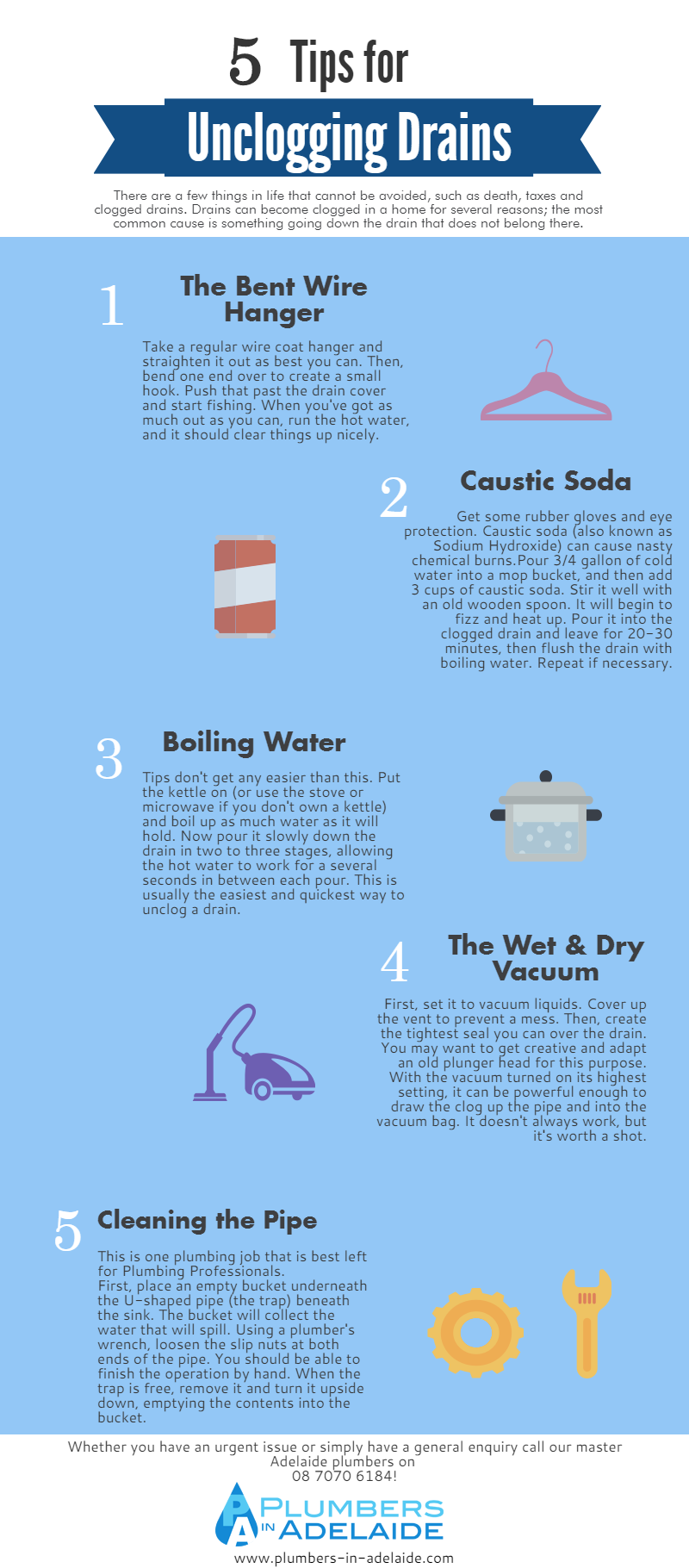
Ever since time immemorial, waste water channels have held lots of significance in our homes. Nevertheless, just like most systems, they tend to malfunction every once in a while. Woe unto you if that happens at an inappropriate or unexpected moment. It might just ruin your entire day or night. Calling for professional assistance is the first thing most people would do. This is to ensure the job is done perfectly and to avoid causing more damage than good. However, there are effective ways you could use to remove foreign objects that may be preventing the water from passing.
The Tips for Waste Removal
Using the bent wire hanger
Do you have any wire coat hanger in your home? Well, you can relieve it of its normal duties for some dirty work. Straighten the wire out and bend one end to form a hook. Take the wire and push it inside the blocked drain. Work it in such a way that the hook can catch most of the foreign substance and not push them further. Pull them up until you are sure it is very little, or none left. The next step is to run hot water, and the system should be back in shape.
Caustic soda
This is for those who want a solution that does not involve pulling out filthy substances from the waste pipe. It is as simple as getting 3 cups of caustic soda (Sodium Hydroxide) and mixing it with a ¾ gallon of cold water. Make sure you are wearing rubber gloves and the eyes are well protected too. Stir the mixture with a wooden stick and as soon as it starts to fizz, pour it into the drain. Leave it for close to half an hour before pouring hot water.
Boiling water
This is the easiest procedure on the list. It’s used even by the most experienced refuse pipe technicians. The reason why you will find it in almost all the other procedures is that of its efficiency. The water has to boil first before you start pouring it through the pipe. This has to be split into two or three stages at most. It is meant to give the water time to deal with the obstruction. However, you should ensure not to heat the water beyond 175 degrees if the pipes are PVC as it could melt them or soften the joints.
The wet and dry vacuum
In this case, you just have to follow the procedure accordingly. The first step is setting the machine to vacuum liquids and covering the vent well. The drain should then be sealed tightly. After that, all that is left is turning the vacuum to its highest setting. Its force should be enough to pull the impediment up and into the vacuum bag.
Opening the pipe for cleaning
Lastly, we come to a method that is certainly the most effective. The only problem is that it might need an experienced hand. It involves unscrewing the nuts of the U-shaped pipe, removing it then pouring the contents into a bucket placed underneath the sink. In this case, you will be able to figure out the real problem or other impending issues and fixing them.
If everything else fails, you can always call the experts on 08 7070 6184. They are available 24/7 hence can serve you at any time or any day of the week including holidays.
— Tim Higgins

Really informative article post. Much thanks again. Fantastic. Andrei
Our company found these tips really usefull thanks for posting